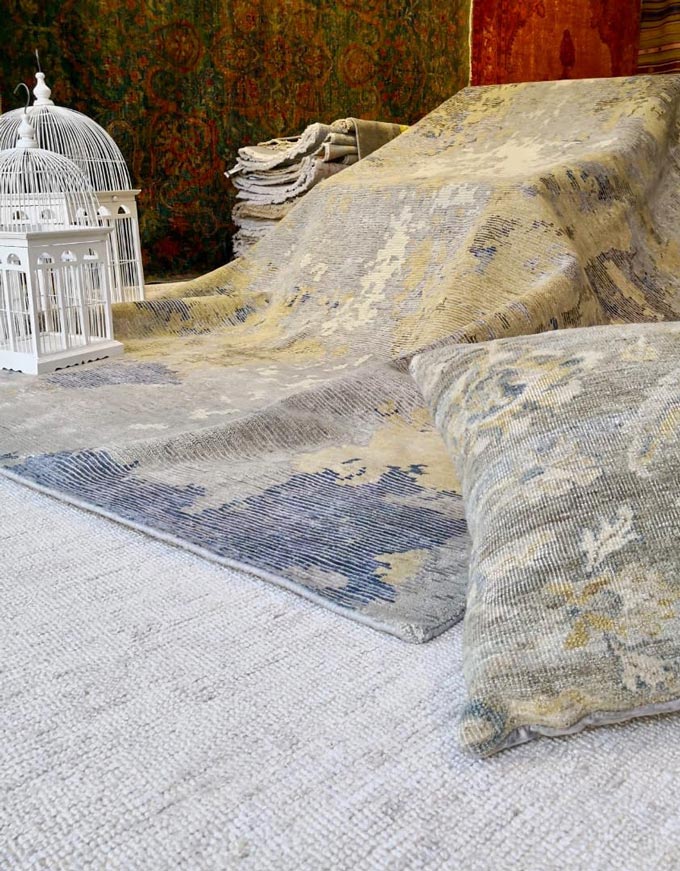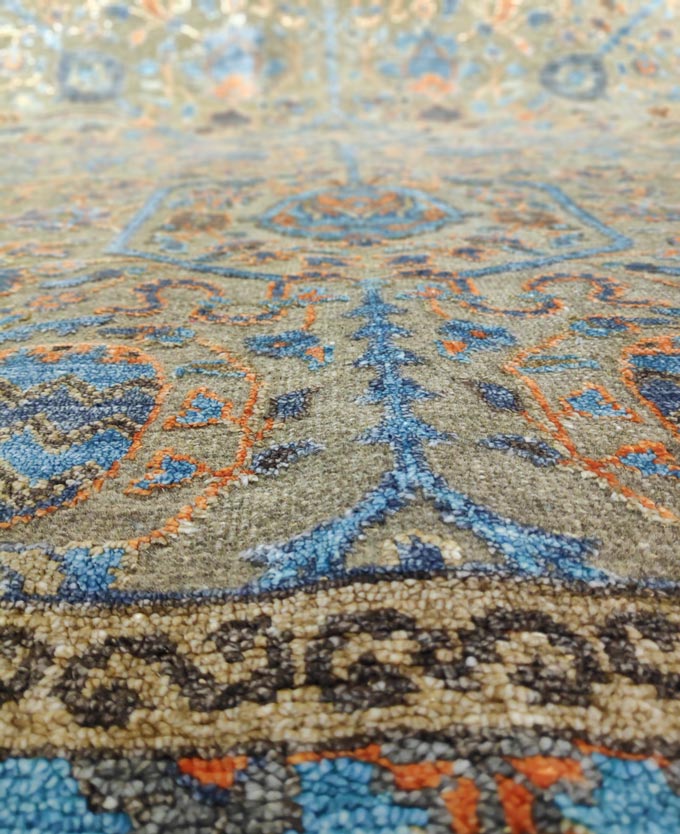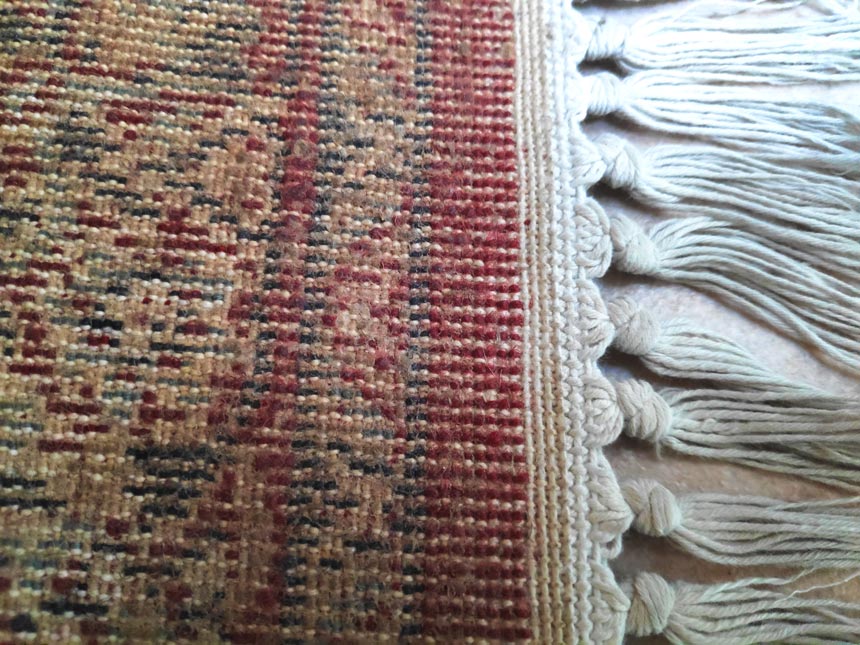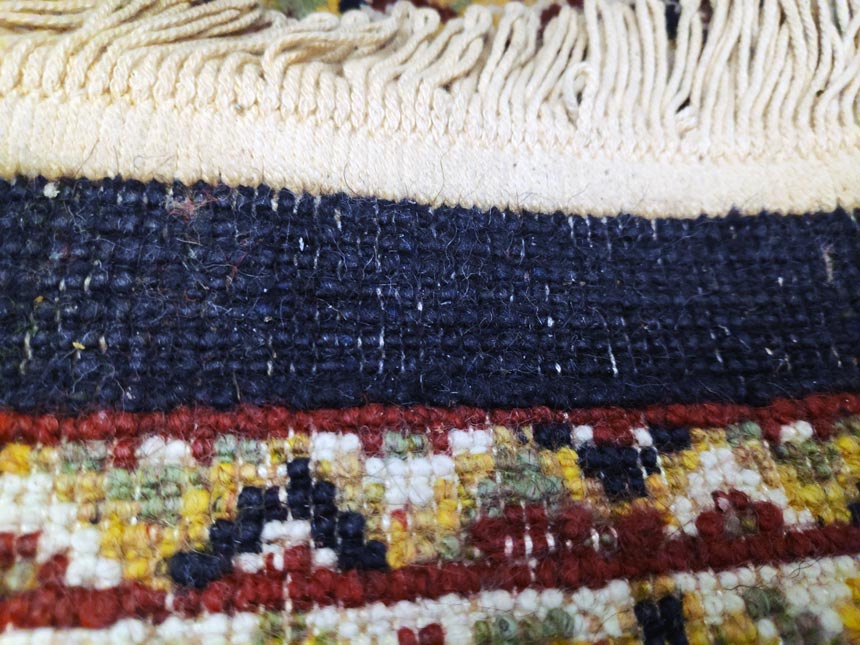Well hello there! I’m back! Hope you all had a great weekend and a good start to this new week. Today, I want to share with you my tips for buying a handmade area rug – that is a hand-knotted rug and not hand-tufted. I received quite a few messages with this request, so I thought that a short video post would be the best way to create a better visual guide.

Now, I’m a beginner film-maker, so be gentle with your feedback on my film-making skills. My aim is to present to you the wonders of the rug industry with sincere hopes that this video will be the basis of more to come, loaded with even more information that will serve you as a reliable source. In any case, I also outline below a few more need-to-know tips.
What You Need to Know When Choosing a Handmade Area Rug
Size
Always measure the area you want to dress with a rug. If you want a rug for your sitting room, the measure the seating area. The rule of thumb to remember is that both of your feet should be on the rug and not the floor. You should not be able to see at first glance the perimeter of the rug. Think about how annoying it would be if one of your feet is on the floor and the other on rug.

Make
The design, pattern (or not), texture, feel and ultimately life span of a rug are governed by its material and manufacturing. Its make. Cotton, wool, silk, jute and sisal are all natural fibers used in rug making. Cotton, jute and sisal rugs are more rustic and hence, look more informal. Sisal is also more enduring than jute.
Now, any rug has to feel good to you. A rug made of wool is probably the most durable with a soft underfoot. (It is also flame retardant, in case you didn’t know that). A rug made of wool and silk will have a sheen to it as well with a more velvety feel. An all silk rug has a lower pile, is super soft with an intense sheen, but is far more delicate. That is why its colors appear differently based on the direction of the natural light.


What to Note: Tips for Determining if a Rug is Hand-knotted or not
- The colors of a hand-knotted rug never bleed. That is one of the telltale signs.
- Hand-knotted rugs have a fringe that is not sewn onto the rug afterwards (like the case with machine-made rugs). This fringe must come out of the rug’s foundation. That is a super-important detail to know. I don’t think I can emphasize this enough.
- Quality rugs and hand-knotted rugs in particular are expensive. Never buy them on sales, or a business clearance sale. You can’t “steal” buy a genuine hand-knotted rug. Its price is never marked-down.
- The back side of a hand-knotted rug is equally important as its top surface. You must be able to clearly identify the foundation threads and white knots at the sides. The more detailed the design, the denser the weave and hence, the greater its value. If you can spot white lines running all over the back of the rug, then chances are that it is machine-made. Those are the foundation yarns and are never visible in a hand-knotted rug.
- If there’s any hint of any plastic or plastic feel to it, then it’s not a genuine hand-knotted one. If the back of the rug is covered in any way, then it’s not a genuine hand-knotted rug. Best chance is that it’s a hand-tufted, which is not the same thing (it has a much shorter life span and is less valuable).
- Hand-knotted rugs hardly ever carry a tag of any kind at the back.
- Look for origin countries like Iran, Turkey, China, Nepal, Pakistan and India that have a history in rug-weaving.
- A genuine hand-knotted rug can be over-dyed at any point. That is the process of de-saturating a faded rug and dying it over (re-saturating) with a singe color dye to change its appearance. You don’t have that option with a hand-tufted or machine-made rug.
Video – Tutorial
Next, watch the following video tutorial where I show you more details about handmade rugs…
I hope you enjoyed the video. There’s more to read on this subject matter, where I discuss the magic of rugs in an interior comparing the European vs American approach.
Yours,

P.S. This is not a sponsored post.




This was a very helpful guide on how to choose a handmade rug! Might actually go for one now without fearing of making a “huge” mistake.